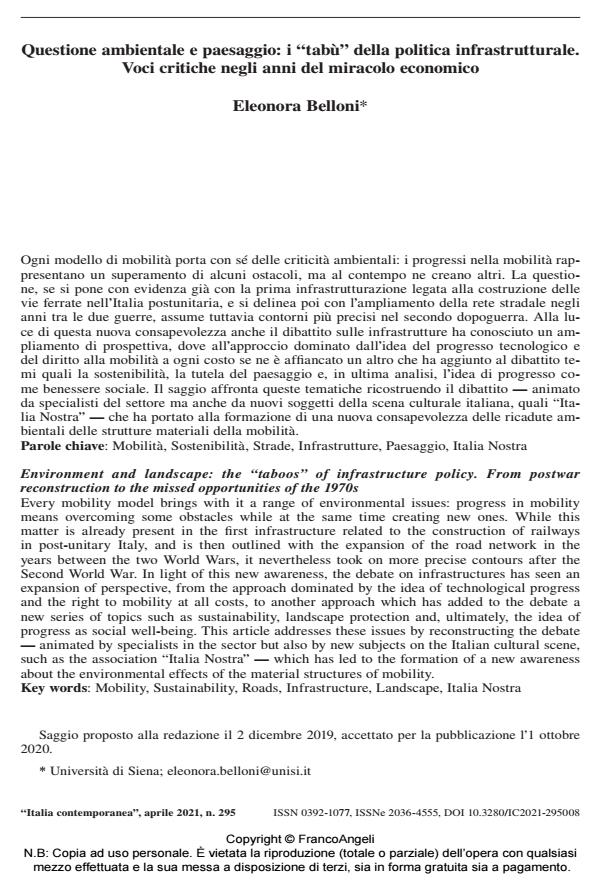Environment and landscape: the "taboos" of infrastructure policy. From postwar reconstruction to the missed opportunities of the 1970s
Journal title ITALIA CONTEMPORANEA
Author/s Eleonora Belloni
Publishing Year 2021 Issue 2021/295
Language Italian Pages 21 P. 165-185 File size 163 KB
DOI 10.3280/IC2021-295008
DOI is like a bar code for intellectual property: to have more infomation
click here
Below, you can see the article first page
If you want to buy this article in PDF format, you can do it, following the instructions to buy download credits

FrancoAngeli is member of Publishers International Linking Association, Inc (PILA), a not-for-profit association which run the CrossRef service enabling links to and from online scholarly content.
Every mobility model brings with it a range of environmental issues: progress in mobility means overcoming some obstacles while at the same time creating new ones. While this matter is already present in the first infrastructure related to the construction of railways in post-unitary Italy, and is then outlined with the expansion of the road network in the years between the two World Wars, it nevertheless took on more precise contours after the Second World War. In light of this new awareness, the debate on infrastructures has seen an expansion of perspective, from the approach dominated by the idea of technological progress and the right to mobility at all costs, to another approach which has added to the debate a new series of topics such as sustainability, landscape protection and, ultimately, the idea of progress as social well-being. This article addresses these issues by reconstructing the debate - animated by specialists in the sector but also by new subjects on the Italian cultural scene, such as the association "Italia Nostra" - which has led to the formation of a new awareness about the environmental effects of the material structures of mobility.
Keywords: Mobility, Sustainability, Roads, Infrastructure, Landscape, Italia Nostra
Eleonora Belloni, Questione ambientale e paesaggio: i "tabù" della politica infrastrutturale. Voci critiche negli anni del miracolo economico in "ITALIA CONTEMPORANEA" 295/2021, pp 165-185, DOI: 10.3280/IC2021-295008